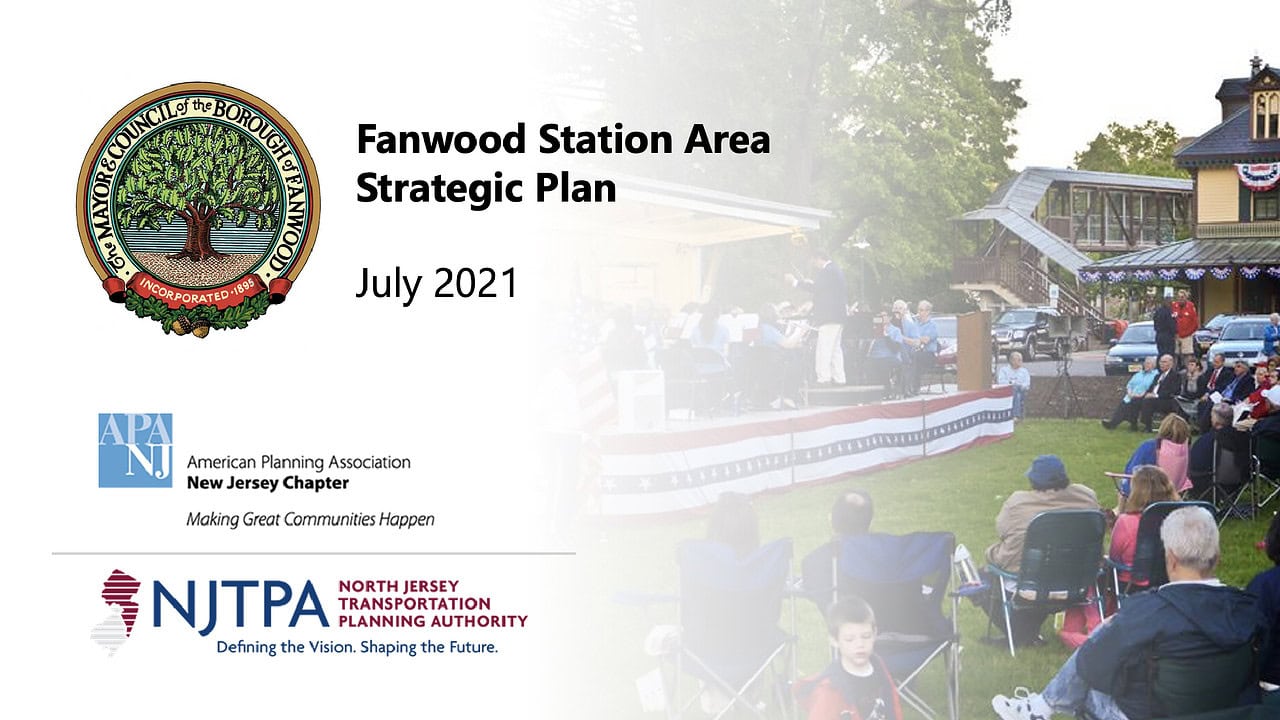Fanwood Transit Hub

The Borough of Fanwood is a 1.4-square-mile suburban community with a population of approximately 7,530 people. Located in the heart of the Borough along NJ Transit’s Raritan Valley rail line, Fanwood Station, was built in 1874 and is the oldest train station in Union County. With travel times of approximately 30 minutes to Newark Penn Station and approximately 55 minutes to New York Penn Station, approximately 8,000 individuals use this station each day and ridership continues to grow. In addition, several bus lines terminate near the station. The area also contains 415 parking spaces in lots surrounding the station that are owned by the borough and NJ TRANSIT and used by commuters from Fanwood and surrounding communities. Over 50% of the parking is used by commuters from outside Fanwood.
The Borough’s retail and commercial districts are located near the station area, along South and Martine Avenues. In recent years, the Borough has prioritized the redevelopment of sites in the surrounding downtown area and has received praise from the New Jersey Redevelopment Authority for its efforts revitalizing the 6.5 acres adjacent to the station, as well as other state-wide recognitions.
Yet several significant challenges have yet to be addressed. Several government buildings, the library and the historic Patricia Kuran Cultural Arts Center are not well connected by pedestrian routes to the station or to each other due to the large commuter parking lots that surround the station. Pedestrian access is also impacted by South Avenue, which runs through the center of Fanwood as NJ Route 28, a state highway designed for higher vehicle speeds and traffic volumes out of context with the community’s local character and access needs.
The American Planning Association’s team of volunteer planners worked closely with the Borough to develop a Transit Hub strategic plan that would strengthen the station area by improving pedestrian connections between the station and the surrounding cultural, retail, and commercial areas and the nearby library and the Kuran Cultural Center. Together they created an online, interactive survey to hear from Fanwood residents and others about conditions at the station and strategies for improving the area. Over one thousand people took the survey and left hundreds of comments. The planners used the results of the survey, along with their own research into the area’s needs , to make the final recommendations to the Borough.
The major recommendations included:
- The Borough should review the historic designation for the station building and the surrounding parking lots. The parking lots were included in the historic designation. While the designation for the building is important the inclusion of the parking areas will prevent redevelopment to the parking lots themselves, and the needed pedestrian circulation improvement.
- The station building is an important asset for Fanwood and is being underused as the home of the history museum. The Borough should consider relocating the museum to another location, possibly the library or the Patricia Kuran Cultural Arts Center, and explore other more effective uses for the station, including the possibility of creating partnerships that can support better uses.
- The Borough should explore the creation of stronger programming for the station area, including more frequent and better community events. Sponsoring a Ciclovia and other open street events could be considered.
- The need for better pedestrian circulation and safety was a major topic in the survey results. Ideas for improvements including strengthening of the Borough’s Complete Streets and Vision Zero policies, and the creation of more and safer pedestrian crossings that connect the station to the surrounding blocks. This could also include reinitiating discussions with NJDOT to create crosswalks on South Avenue, which is owned by NJDOT. If NJDOT is not willing to consider this, the Borough could work to transfer ownership of South Avenue from NJDOT to the Borough.
- Exploring the benefits of creating a branding program for the station area and developing wayfinding in the area so visitors can find important locations in the area.
Fanwood Transit Hub Team:
- Jim Watson – Team Leader
- Scott Bauman
- Mark Keener
- Adam Levine
- Don Meisel
- Peter Primavera
- Janna Chernetz
- Kevin Garcia